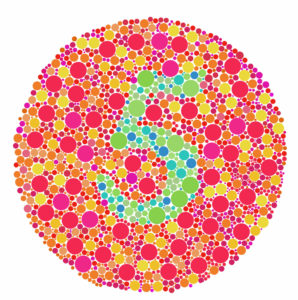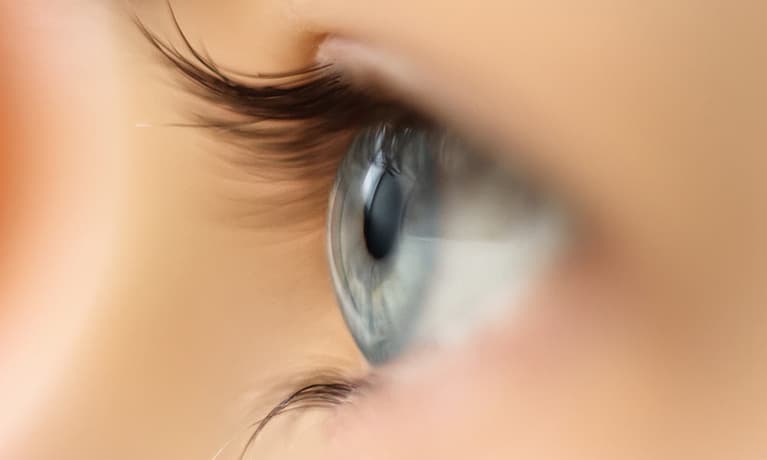Thanks to the cone cells in the retina, our eyes are sensitive to various wavelengths of light, which gives us color vision. There are three types of cones, with maximum sensitivity to blue, green or red light. Depending on how much of each cone type is stimulated, our brains can interpret the hundreds of thousands of shades of color that we see everyday. But did you know that compared to some animals we are practically color blind?! While we have just 3 types of cone cells, the eyes of many fish and birds have sensitivity to up to 23 different types, all sensitive to different wavelengths of light — we cannot even comprehend what colors they are seeing because we have no concept of them! Scientists speculate that many of these extra colors are neon to help fish that are deep under water with very little light see things more clearly. Same thing with birds and other animals — it gives them an advantage when hunting. We humans are limited comparatively, but many of us are further limited in our ability to detect color due to “color blindness”.

There are two main types of Color Blindness:
Red/Green
People with red/green color deficiency have difficulty telling the difference between reds, greens, browns, and oranges. Blues and yellows stand out to them. For example, flowers that reflect both red and blue light will just look blue to these individuals.

Blue/Yellow
People who suffer from blue/yellow color deficiency have difficultly distinguishing between blue, yellow, violet, red, blue and green! The world appears in different shades of pink, black, white, gray and turquoise.

Color vision deficienceis can occur in both men and women but are much more common in men – in fact, 8% of males and 0.5% of females are affected. This is due to the way color deficiency is genetically inherited. Inherited color blindness occurs when a person is missing one or more of the cone cell types or they don’t work right. The affected person may see a different shade of that color or a different color compared to someone who has all three cone types. Disease processes that affect the cone cells can also affect color vision, such as macular degeneration, cataracts, and diabetic retinopathy. It is amazing what a small part of the body our eyes take up but what a huge impact it makes in our lives!

Good Health!
Written by Paula W., Milwaukee Eye Care’ Ophthalmic Technician and Surgical Coordinator for Dr. Jason Edmonds










